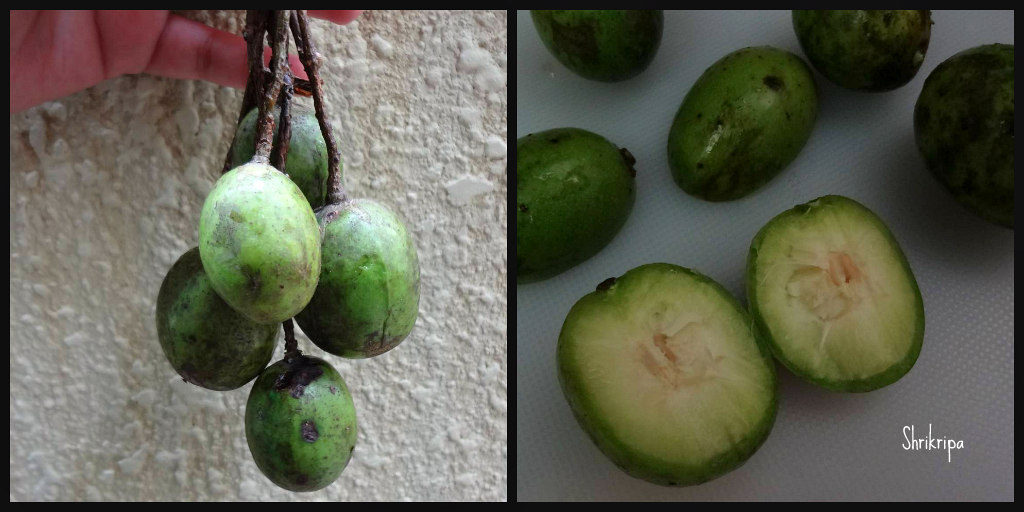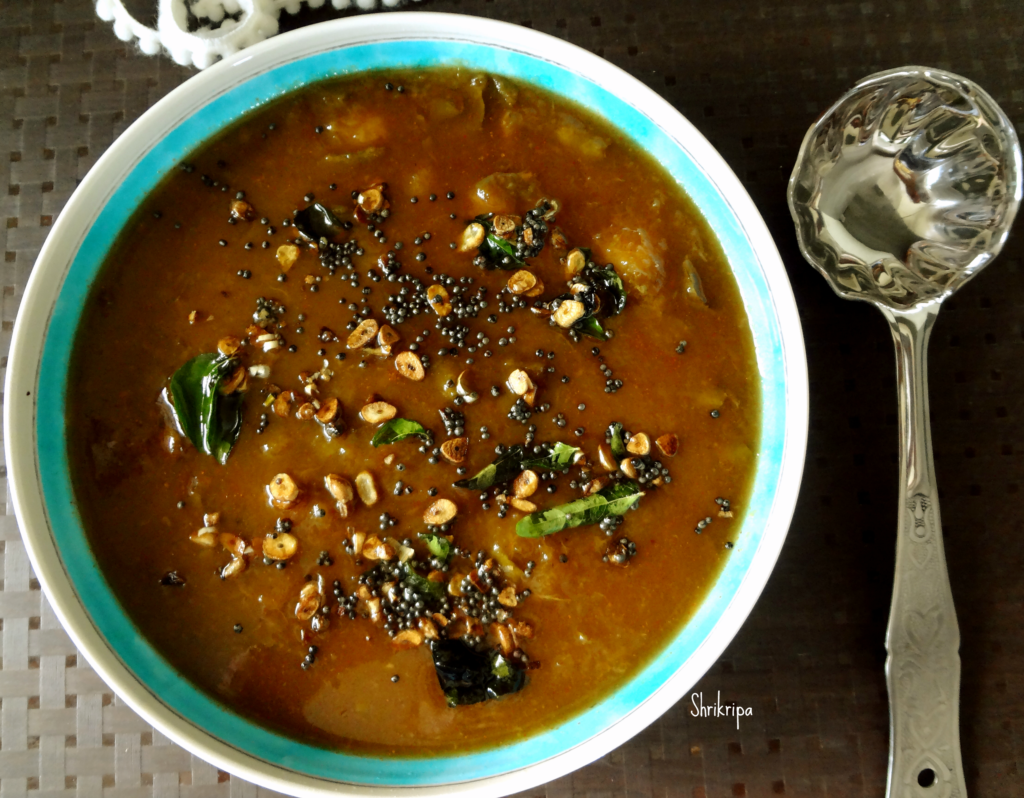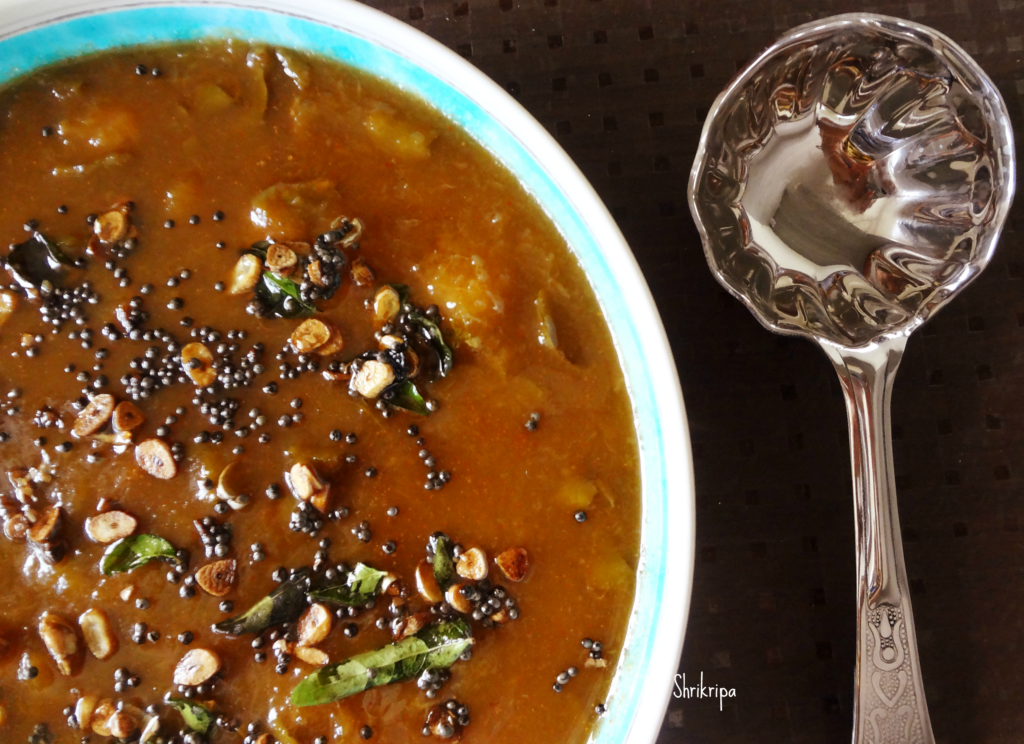We call hog plum as “Amtekai” in Kannada and as “ambate” in our local language. In our region you will find 2 varieties of hog plums. One is Wild variety which is also known as Indian sour hog plum and the other one is known as grafted or Kashi Amtekai/ hog plum. Grafted variety is nothing but Hog plums which we normally find in South America or South East Asia. Also known as Ambarella or Golden apple which belongs to the specie – spondias dulcis.

Wild variety is normally used in pickle making or as a souring agent in some of the traditional curries because of its sour taste. When it matures, seed becomes hard and skin becomes thin. Here I have used normal hog plum, which has a fibrous core and when it matures, skin will turn green to yellow and sweetish in taste. People use this as a fruit as well.
Gojju/ Gojji is an essential side dish of our community. Which is a semi solid, tamarind based, sweet and sour curry, which can be relished as it is with hot rice, or as an accompaniment with curd rice as well. Some of the gojjus taste good with Dosa or Idli as well.

Ingredients:
Hog plums – 7 to 8
Jaggery – 2 to 4 table spoons
Salt
Red chilli powder – 1 tea spoon
Seasoning:
Coconut Oil – 1 table spoon
Mustard – 1 tea spoon
Garlic cloves – 8 to 10 (sliced)
Curry leaves – 1 spring
Method:
-Wash and cook hog plums in sufficient water by adding salt, jaggery, red chilli powder in a pressure cooker.
-One whistle is more than enough for this veggie to cook.

-When it is cooked, outer skin layer will separate, inner flesh will become soft.
-Mash a little by using back of the serving spoon, to give a texture to the curry.
-Mix everything and check for salt, hot and sweet. Add whatever is needed.
-Curry should taste tangy, hot and sweet.
-Boil this and add seasoning.

-Heat oil, splutter mustard, add sliced garlic. When garlic becomes brown, add curry leaves and pour this over curry.
-Serve as a side dish with rice or curd rice.
Note:
-Usage of garlic is purely optional.





